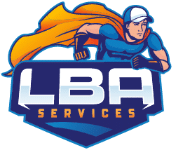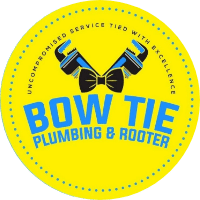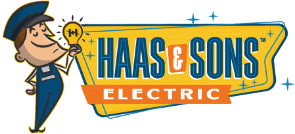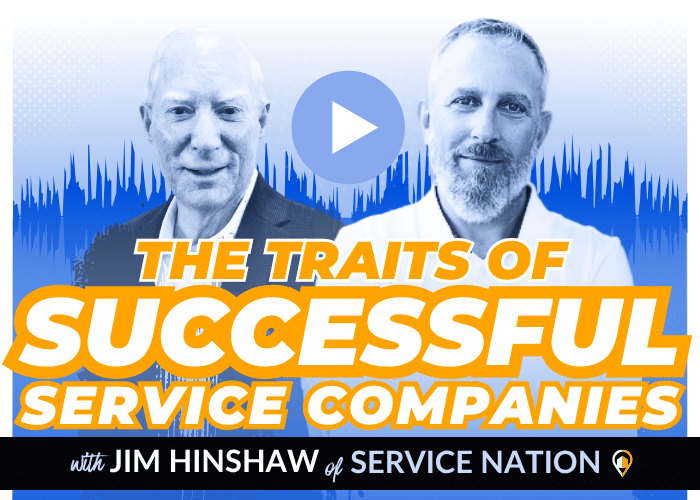














Standard Operating Procedures: Process First, Culture Always
Mark Sherwin’s Podcast On Successful Service Contractors With Jim Hinshaw
- Intro & Why Some Contractors Win (0:00)
- Write SOPs Before You Hire (3:13)
- Six-Foot Door-Knock Rule (4:30)
- Process → Culture Link (6:49)
- Morale Boosts: Caricature Story (11:57)
- Owner 50 / 50 Marketing Rule (15:30)
- Guerrilla Marketing Wins (19:34)
Show Full Podcast Transcript
Jim: Exactly. I’m glad you brought up training. We need a robust training aspect—even if it’s just the basics—because people hear what they want. Brains tune out, thinking, That’s not important anymore. Yes, it is. The more you repeat, the more important it gets. Culture is the second-most valuable thing. It requires open leadership and shared values.
Successful owners spend one-on-one time with every employee, saying, “Here’s who we are.” In Phoenix, Roberts Air Conditioning is on its third generation with a fourth being trained. The president tells new hires: “You’ve got three generations of Roberts on your shoulders—don’t drop the ball.” Employees know if they’re unsure, stop and call. If they need to make a customer-centric decision—maybe a credit—they’re empowered: “Mrs. Jones, I’ll make this right now.”
Here’s a culture example I watched unfold. A Pennsylvania member started around $5 million. Three years later they hit $18 million. Every year they shut down at 2 p.m. on Friday for a golf extravaganza. Everyone gets a prize. One year the owner commissioned caricatures of every employee—accounting staff with calculators, installers with wrenches, refrigeration techs with gauge sets. They looked like each employee. He had 35 employees; I assumed thousands of dollars. He said, “No, Fiverr artist in Brazil, ten bucks apiece.” Framed, two-foot by eighteen-inch. Visitors see them on the wall; employees feel recognized. That kind of culture attracts talent and clients.
People also look at your About Us page. Across all LeadsNearby clients, About-Us is a top-five page. They want to know who you are, your culture, values, mission, watch videos.
Mark:
Great point. And you’ve adopted the title CEO—Chief Encouragement Officer. Owners need to know what employees are going through and how customers feel. My top-performing clients all built culture and community involvement. They sponsor 5Ks, gift-of-heat programs—they see community as helping, not obligation. When I sell, I ask: How did you get where you are? The most successful clients are more than 50 percent involved in their own marketing. The other 50 percent is running the company through processes they established. Because they have time, they market. Gorilla marketing still works: yard signs, unit stickers, coupons. Everybody participates.
One client called, “We’re a little slow.” He knew that mostly falls on him. Joe Stripmatter once posted: “How involved should I be in marketing?” He answered himself: 50 percent. It’s the E-Myth principle. After owners do their legwork, they come to us: “Position me when people search.” Roy White is a good example—great culture, but the website didn’t reflect it until we painted the picture. He’s contractor of the year at Service Nation. We’ll tour his place in October.
Jim: Culture, training, community—those still propel growth as you scale. One member in Atlanta—started as an electrician, added HVAC and plumbing—has grown to $74 million. He’s involved in community, reviews, everything. He built a culture people want to join; some employees left to start their own thing, but often come back or he helps them succeed, raising the industry bar.
Mark: Exactly. Own your backyard before expanding. Primo helps map opportunities—zip codes with your target home profiles. We identify where to focus next.
Jim: Hire for attitude, train for skill. One Tennessee company does $350 million across five states, with 1,000 techs. They do HVAC, plumbing, electrical, garage doors, connected home, solar—everything. Each of five managers is responsible for a ~$50 million branch and aiming for $100 million. One general manager used to run a barbecue restaurant. The owner saw his attitude and trained him on technical knowledge.
Mark: When should a company join an organization like Service Nation?
Jim: Anywhere on the journey. We help members from $250K one-man shops up to $350 million enterprises. We have four membership levels, a fifth elite level, and over 30 coaches covering sales, implementation, culture, finance, operations. Roy White, contractor of the year, hired our sales coach Traci Harper even though he’s a coach himself, because his team hears advice differently from an outsider.
We do regional trainings—disk profiling, implementation, on-site tours with vendor partners. For example, Sunbelt Rentals hosted; 15–20 members attended, loved it. My job at those events is host: pick hotels, restaurants, keep flow moving, and explain coaching packages.
Mark: Seek advice from people who’ve been there. Watch videos like this, find mentors you align with, trust authorities. Jim, I appreciate this conversation—easily one of my favorite podcasts so far.
Jim: Thank you. One last offer: call me at 602-369-8097, mention this podcast, and I’ll give you $100 off Service World Expo in Las Vegas this October. It’s huge—you’ll be blown away.
Mark: Amazing. Jim, thank you. See you in Vegas!
5 Key Takeaways: A Startup Playbook For Service Contractors
➲ Documenting processes early keeps growth from turning into chaos.
➲ Clear procedures become daily habits—and habits become culture.
➲ A simple door-greeting script and $50 goodwill credits can rescue reviews.
➲ Owners who spend half their week on marketing see faster revenue jumps.
➲ Low-cost traditions can foster loyalty and slash recruiting headaches.
How Do Standard Operating Procedures Help a Small Service Business Grow?
Written procedures turn guesswork into repeatable results, giving even the smallest shop a franchise-level backbone from day one.
Mark recently spoke to guest expert Jim Hinshaw, who urges contractors to jot down core steps “even while it’s still just you and a helper. This way, every new hire plugs into a proven system.”
That clarity matters: according to a study commissioned by Adobe, 45 % of U.S. small businesses still rely on paper-based documentation, slowing teams and losing files, meaning those that digitize early gain a speed edge.
Starter SOPs to Write This Week
- Service-call checklist (arrival, diagnosis, cleanup, payment).
- Invoice & parts-ordering flow.
- Next-day follow-up text or email script.
Need a hand visualising values in action? We’ve already covered how Your Core Values ARE Your Brand, so you can get information that converts neatly into an SOP.
Can Written Processes Really Improve Company Culture?
Yes—repeat a process long enough and it becomes “the way we do things here,” which is culture in action.
Hinshaw sees the gap daily: 80 % of contractors buy yard signs and review cards, but only 20 % deploy them consistently. When the steps are written, tracked and coached, those marketing touches happen without reminders, converting brand promises into habits.
We have long stressed the need for community involvement, which is another critical part of company culture. All of these concepts work together to get you found, selected, and remembered. You can’t neglect any of them and expect consistent success.
What’s the Best Way for Technicians to Greet Homeowners At The Door?
Good culture is part of every second of the workday. Jim cites his “knock-and-step-back” rule as one of many ways to signal courtesy and safety before a word is spoken.
“The script is simple: knock, retreat six feet, smile, and greet the customer by name. That small ritual diffuses anxiety and goes a long way toward earning a five-star review before the wrench even comes out.”
As you’ll see in the video below, Jim also thinks frequently about an interaction he had with NBA legend Danny Ainge: “He would open training camp by having NBA veterans stop and re-tie their shoes—because when you master the basics, the big plays take care of themselves.”
Can Techs Handle Customer Complaints On the Spot?
Empower them to issue up to a $50 “make-it-right” credit without a phone call.
Hinshaw credits this tiny budget line for saving untold Yelp meltdowns. A $50 write-off beats the lifetime value lost when a frustrated homeowner tells her HOA.
How Much Time Should Service Business Owners Spend On Marketing?
The fastest-growing shops devote at least half of the owner’s weekly schedule to revenue-generating marketing and community visibility initiatives.
Gallup’s meta-analysis shows that engaged teams, ones 23 % more profitable, are driven by owner-led guerrilla tactics like yard signs and coupons.

How Can I Boost Employee Morale Without Breaking The Budget?
Pick one quirky, low-cost tradition and celebrate it every year.
One Pennsylvania HVAC firm shuts down at noon for an all-hands golf scramble and gifts each employee a $10 caricature portrait. Revenue soared from $5 M to $18 M in three years, and turnover plummeted.
- Charity build day with matching T-shirts.
- Quarterly “tech-talent show” lunch.
- Family movie night in the warehouse.
Implementation Checklist
- Draft three core SOPs and share them at the next toolbox meeting.
- Print the six-foot greeting script on every tech’s clipboard.
- Grant field teams a $50 goodwill limit—no manager approval needed.
- Block 10 hours a week for owner-driven marketing tasks.
- Choose one annual tradition; book the date today.
Every championship begins with laces double-knotted—and every fast-growing service company begins with clear procedures. If you’re ready to turn these checklists into real-world wins, reach out to the LeadsNearby team and let’s map your next steps. For even more examples you can swipe and deploy, watch the full conversation with Jim Hinshaw above.
Frequently Asked Questions: Service-Company SOPs & Culture
What’s the fastest way to write my first SOP?
Start with a voice memo—talk through the task while you do it, then transcribe and trim to bullets.
How long should an SOP be?
One printed page or less; if it needs more, split it into sub-steps with clear headings.
Do I need fancy software to manage SOPs?
No. A shared Google Doc or intranet folder works until your team outgrows it.
What KPIs show my processes are working?
Track callback rate, average ticket, and review volume before and after SOP rollout.
Last updated: June 2025
Marketing Automation Case Study: 236% Revenue Growth In Eight Months » « Brigham Dickinson On 93 Percent Booking Rates:Six CSR Coaching Lessons



